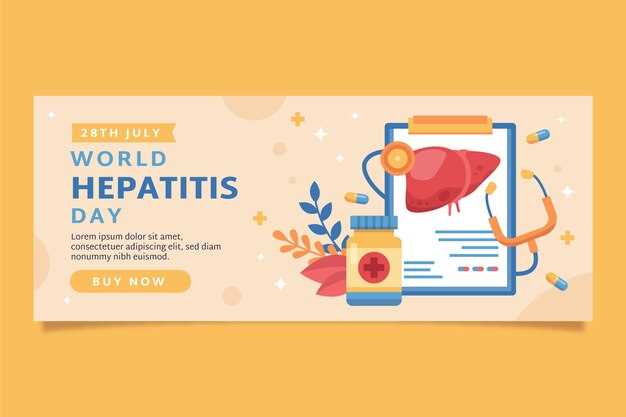
Discover a breakthrough approach to fostering liver health with our innovative solution. Embrace a holistic strategy that targets hepatic challenges without compromising your well-being.
Understanding the Role of LDN in Hepatic Conditions
Exploring the intricate interplay between a novel therapeutic approach and the complex realm of liver ailments unveils a profound narrative. This section delves into the essence of how LDN intricately interacts with the hepatic system, illuminating the nuanced dynamics at play.
The Significance of Hepatic Function
Before delving into the specific nuances of LDN’s impact on hepatic conditions, it’s paramount to grasp the pivotal role the liver assumes within the human physiology. Serving as a biochemical powerhouse, the liver orchestrates a myriad of essential functions, encompassing detoxification, metabolism, and the synthesis of vital proteins. Any disruption to its delicate equilibrium can reverberate throughout the body, precipitating a cascade of adverse effects.
Unveiling the Nexus between LDN and Liver Health

Within the intricate tapestry of hepatic diseases, LDN emerges as a beacon of hope, offering a unique avenue for ameliorating the burden of liver afflictions. Through elucidating the mechanisms underpinning LDN’s modulatory effects on hepatic pathways, a clearer understanding of its therapeutic potential materializes. This elucidation paves the way for informed discourse on harnessing LDN as a tool for managing and mitigating the ramifications of liver disease.
The Impact of Hepatic Conditions
When considering the ramifications of hepatic ailments, one is immediately confronted with a cascade of effects that permeate not only the afflicted organ but also reverberate throughout the entire body. These conditions wield a profound influence on overall health, disrupting physiological equilibrium and compromising essential bodily functions.
Dysfunction within the hepatic system can lead to a myriad of complications, ranging from impaired metabolic processes to compromised detoxification mechanisms. This intricate network of interrelated functions underscores the significance of maintaining hepatic health.
Furthermore, hepatic disorders can exert a substantial toll on an individual’s quality of life, often manifesting as debilitating symptoms such as fatigue, jaundice, and cognitive impairment. The multifaceted nature of these conditions necessitates comprehensive management strategies to mitigate their adverse effects.
Addressing the impact of hepatic conditions requires a holistic approach that encompasses not only symptomatic relief but also endeavors to rectify underlying imbalances. By understanding the intricate interplay between hepatic function and overall well-being, one can embark on a journey towards restoration and revitalization.
Introducing a Modest Dose of Naltrexone
<
Benefits of Naltrexone’s Mild Dosage for Hepatic Conditions
Exploring the advantages of utilizing a measured approach to leverage the therapeutic potential of naltrexone in addressing hepatic challenges unveils a spectrum of promising outcomes. By delving into the intricate mechanisms underlying its action, we uncover a nuanced interplay that offers profound benefits in managing liver health without resorting to higher doses.
Enhanced Liver Function: Employing a mild dosage regimen of naltrexone fosters a conducive environment for the liver’s innate regenerative capabilities. This approach supports the organ’s physiological functions, promoting detoxification pathways and bolstering cellular integrity.
Alleviation of Inflammation: The judicious administration of naltrexone at lower doses demonstrates a propensity to mitigate inflammatory responses within hepatic tissues. By modulating immune reactions, this regimen aids in curbing the progression of inflammatory conditions, thus safeguarding hepatic well-being.
Preservation of Hepatic Architecture: Through its targeted action on specific neural pathways, mild-dose naltrexone exhibits a remarkable ability to preserve the structural integrity of the liver. By minimizing oxidative stress and attenuating fibrotic processes, this regimen contributes to the maintenance of hepatocellular architecture.
Modulation of Fibrosis: Naltrexone’s nuanced modulation of fibrogenic pathways represents a pivotal mechanism in mitigating hepatic fibrosis. By impeding the deposition of extracellular matrix proteins, this approach holds promise in ameliorating the progression of fibrotic liver diseases.
Improved Patient Outcomes: Embracing a tailored approach to naltrexone therapy offers tangible benefits in enhancing patient outcomes and quality of life. By addressing underlying hepatic dysfunction with precision and efficacy, this regimen empowers individuals to navigate their journey towards optimal liver health.
How Low Dose Naltrexone Works

Understanding the mechanics behind the efficacy of this treatment involves delving into the intricate interplay within the body’s biological framework. At its core, the mechanism of action hinges upon modulating certain pathways, orchestrating a response that addresses the underlying factors contributing to the condition in question.
Primarily, this approach entails harnessing the body’s innate regulatory mechanisms to restore equilibrium, fostering a milieu conducive to healing and restoration. Through subtle yet profound interactions, it navigates the intricate web of biochemical signals, recalibrating aberrant patterns and fostering a state of renewed vitality.
Central to its function is the facilitation of regulatory feedback loops, which serve as guardians of physiological stability. By fine-tuning these intricate mechanisms, it endeavors to mitigate the cascading effects of dysregulation, thereby offering a beacon of hope amidst the tumult of ailment.
Moreover, it acts as a catalyst for cellular rejuvenation, ushering in a wave of revitalization that reverberates throughout the organism. This revitalization is not merely symptomatic but penetrates to the very core of cellular function, fostering resilience and fortitude in the face of adversity.
As such, the efficacy of this intervention lies not in brute force but in the finesse with which it navigates the intricate tapestry of biological processes. It represents a testament to the ingenuity of medical science, harnessing the body’s inherent capacity for healing and channeling it towards a path of restoration and well-being.
Considerations and Precautions
When delving into the intricacies of utilizing this treatment option, it is imperative to carefully weigh various considerations and exercise due precautions. Understanding the nuances surrounding its administration and potential effects is pivotal for optimizing outcomes and ensuring patient safety.
First and foremost, it’s essential to recognize the individual variability in response to this therapeutic approach. Factors such as medical history, concurrent medications, and physiological nuances can significantly influence its efficacy and tolerability.
- Assessing the patient’s overall health status and medical background is crucial prior to embarking on this regimen.
- Close monitoring of biochemical parameters and biomarkers may be warranted to gauge treatment response and detect any adverse reactions promptly.
- Collaboration with healthcare providers, including specialists versed in hepatology and pharmacology, can provide valuable insights and guidance throughout the treatment journey.
Furthermore, while this intervention holds promise in addressing certain health challenges, it’s imperative to acknowledge and mitigate potential risks and contraindications. Adherence to recommended dosages and administration protocols is paramount to minimize the risk of adverse events.
Moreover, fostering open communication with patients regarding potential side effects and anticipated outcomes fosters a collaborative approach to care and empowers individuals to make informed decisions regarding their health.
In conclusion, navigating the landscape of this therapeutic modality necessitates a judicious balance of vigilance, education, and patient-centered care. By prioritizing considerations and implementing prudent precautions, healthcare practitioners can maximize the therapeutic benefits while safeguarding patient well-being.
Takeaway: Managing Hepatic Conditions with Moderated Medication
In this conclusive segment, we delve into the pivotal role of a carefully calibrated pharmaceutical approach in addressing hepatic conditions. We highlight the significance of tailored medication strategies in mitigating the adverse effects associated with hepatic disorders.
Exploring the nuanced interplay between pharmacotherapy and hepatic health, we unveil a comprehensive framework for managing hepatic conditions through a nuanced medication regimen. By elucidating the intricate mechanisms underlying medication management, we empower individuals to navigate the complexities of hepatic disorders with informed precision.
Furthermore, we underscore the imperative of judicious medication administration in ameliorating hepatic function and mitigating associated complications. Through a systematic examination of medication protocols, we underscore the transformative potential of a well-regulated pharmacotherapeutic approach in fostering hepatic resilience.
Conclusively, we advocate for a holistic approach to medication management, underscored by meticulous monitoring and informed decision-making. By embracing a nuanced understanding of medication dynamics, individuals can proactively embark on a journey towards hepatic well-being and vitality.
